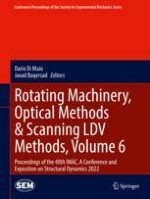2023 | OriginalPaper | Chapter
18. A Hybrid-Attention-LSTM-Based Deep Convolutional Neural Network to Extract Modal Frequencies from Limited Data Using Transfer Learning
Authors : Mehrdad Shafiei Dizaji, Zhu Mao
Published in: Rotating Machinery, Optical Methods & Scanning LDV Methods, Volume 6
Publisher: Springer International Publishing
Activate our intelligent search to find suitable subject content or patents.
Select sections of text to find matching patents with Artificial Intelligence. powered by
Select sections of text to find additional relevant content using AI-assisted search. powered by
